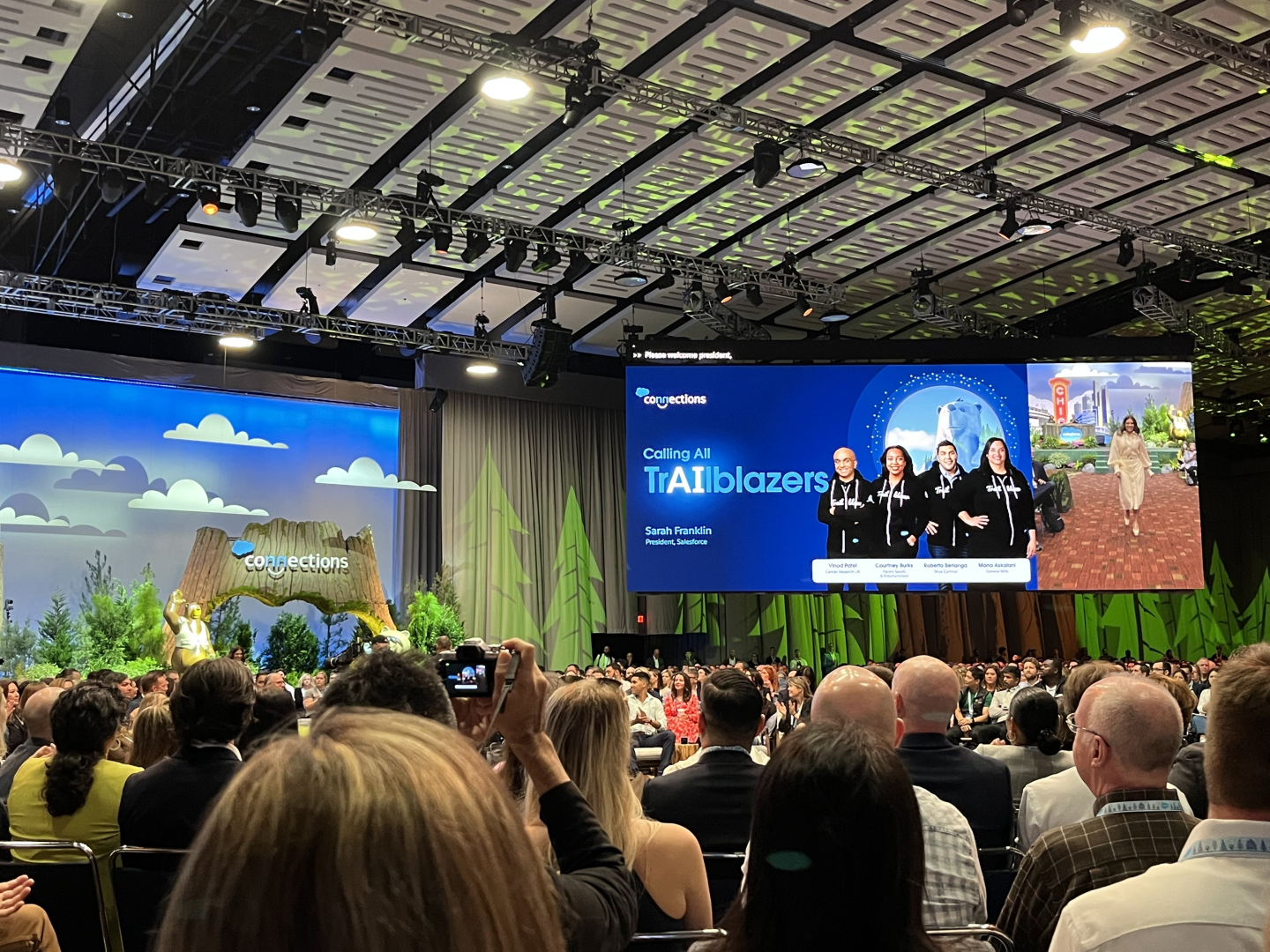Salesforce Connections 2023 Recap: How To Train AI Models To Streamline Content Creation
- Written by Kelly Lindenau
- Published in Industry Insights
It’s no secret that artificial intelligence (AI) is permeating all aspects of the B2B industry, as 51% of marketers are currently using generative AI, Salesforce research found. With its promise of streamlining monotonous, time-consuming tasks, engaging with prospects and buyers in a human-like way and even writing copy for overwhelmed content creators, it’s clear why AI is touching all aspects of marketing — and why Salesforce made it the crux of its Connections 2023 event.
“We are definitely at the precipice of an AI revolution, and it's happening super-fast — faster than other trends that we’ve seen,” said Sarah Franklin, President of Salesforce. “And it is imperative that everybody pay attention right now: If you don't have an AI strategy and aren’t looking at your data to make sure it's in order, you're going to be left behind and put out of business. We have to look at this technology, embrace it with courage and conviction and bring our values into it.”
As Franklin revealed Salesforce’s new AI innovations, she explained AI still raises some real questions: Who’s in charge? Where does the data go? Who’s creating the models and algorithms? What data is training the model? Is AI trustworthy?
And so began two days packed with sessions that explored what the world of AI-powered everything will look like.
Innovating The Customer Experience By Training AI Models
The top reasons marketers are using generative AI include creating basic content, writing copy, inspiring creative thinking, analyzing marketing data and generating image assets, the research found. With AI essentially touching all aspects of content creation, it’s imperative that practitioners work closely with the AI models to shape them accordingly.
“The initial opportunities around AI are augmenting existing tasks and enabling it to scale, whether it’s writing copy for your website or loading assets into digital asset management tools,” explained Carloyn Pollack, CMO of Tailored Brands. “There are a billion things AI can support, so it’s about helping your people get the skills needed and developing them in a way that they will continue to add value to the organization as they evolve with AI.”
“When you get into the world of AI, there’s a new vocabulary and language that we need to learn, whether it’s prompting or grounding,” said Franklin. “If you can understand and learn those concepts, then a few prompts can get you to an accurate answer and outcome — it doesn’t have to be a super sophisticated model. And that’s what’s most powerful: When you know the purpose of AI and the prime directive, then you can train it on what it means.”
However, despite the power AI holds, marketers still have real concerns regarding AI and content:
- 31% are worried about accuracy and quality;
- 20% have fears around trust; and
- 18% are scared about their job safety.
That’s where the saying “garbage in, garbage out” comes from — AI is only as powerful as the insights informing it, which are prompted by users. Franklin explained that practitioners should adopt the “edit, then take credit” model for AI-generated content, meaning that the initial results should be used as a first draft that content creators must fact check and enhance.
To help shape the information they feed the AI, Pollack recommended that practitioners apply “filters” to the model approach by considering:
- Will this action improve the customer experience?
- Does it help the customer better engage with the company?
- Is the customer getting the most out of their offerings?
“Some of the thought is around how people are going to find our products, but when we engage with this technology, it’s more about how we make sure that the customer gets the most value and experience,” explained Pollack, pointing to Salesforce research that found 66% percent of marketers say human oversight is needed to successfully use generative AI in their role, which is why “it's not just about hiring new people; it’s about elevating the people we have,” she noted.
To that end, the onus is placed on leadership to ensure their employees are equipped with the training and tools they need. However, it’s clear that’s an area that still needs improvement: Although 54% of marketers believe generative AI training programs are important for them to successfully use generative AI in their role, 70% say their employer does not yet provide generative AI training.
But when companies can align on AI initiatives from the top-down and equip themselves with the tools needed, estimates show that AI can save each worker more than five hours per week – the equivalent savings of one month per year (based on the traditional nine to five work week).
“When you think about it, the first computers were people,” said Franklin. “And when machine computers first came around, people were scared — they thought the machine computer would take their job. But now look where we’re at: We don’t have enough people to tell the computers what to do. When I look at AI, I see it unlocking so much opportunity for us to skill up, learn and do incredible new things, especially in the world of marketing.”


